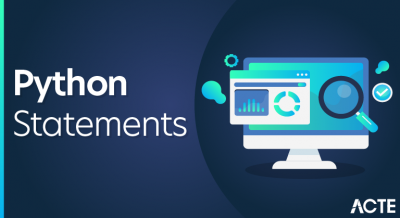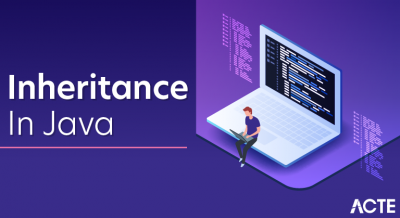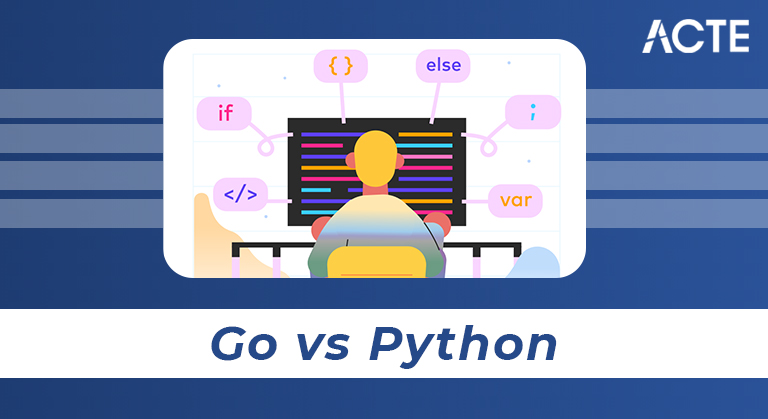
On most benchmarks, Go beats Python by far. Go even beats Java’s speed, which is widely considered to be significantly faster than Python. If it comes down to needing a program to load software quickly, Go is the way to Go.
- Introduction to Go vs Python
- Go and Python project’s real-world success stories, showcasing advantages and practical applications
- Characteristics of Go vs Python
- Python’s dynamic typing and Go’s static typing impact development process and coding errors
- What does syntax look like in python and go?
- Is python faster than Go
- Error Handling in python and go
- Does Python or go support concurrency
- Conclusion
Introduction to Go vs Python
Go was introduced by Google to address contemporary software development difficulties. With a focus on performance, efficacy, and concurrency for scalable systems and network applications, Developers may quickly understand and write code using Go’s fundamental syntax, and the compilation process results in quick and effective executable binaries. Go is the ideal language for applications that place a high value on performance because it is compiled, which speeds up execution and uses less memory. The Go ecosystem is expanding swiftly, despite possibly not being as advanced as Python’s. Developers often create original solutions due to language simplicity.
Python is an open-source, interpretive programming language with dynamic typing. Python, which is renowned for its readability and simplicity, prioritises code readability and delivers a beautiful and expressive syntax that reduces programme maintenance costs. Thanks to its versatility and sizable standard library, Python is a well-liked choice for a range of applications, including web development, data analysis, artificial intelligence, scripting, and automation. Developers prefer it for its interpreted nature, enabling quick creation and simple prototyping, benefiting both novices and seasoned professionals.
- Docker: Go is used in Docker development, offering efficient container management, quick deployment, and scaling due to its performance and concurrency properties.
- Kubernetes: A container orchestration system, is written in Go, offering lightweight Goroutines and strong concurrency support for complex container management.
- InfluxDB: Go creates InfluxDB, a high-performance time-series database with speed, small memory footprint for real-time data storage and analytics.
- Prometheus: Go integrates Prometheus, an open-source monitoring system, enhancing performance and parallelism for efficient data collection and processing.
- Instagram API: The Instagram API is powered by Python, enabling programmatic access to and engagement with Instagram’s features by developers.
- Jupyter: Python is a key component of the Jupyter Project, which includes Jupyter Notebook, for interactive computing and data visualisation.
- BitTorrent: Python is used to implement the peer-to-peer file sharing protocol and software.
- SciPy and NumPy: Python’s scientific computing packages are widely used for data analysis and numerical computing in academia and research.
- Django: A Python-based high-level web framework that powers multiple websites and web applications.
- TensorFlow: Python is used to implement Google’s open-source machine learning framework, which is widely used for developing and training deep learning models.
- Eve Online: The well-known multiplayer online game features a sizable Python-based backend.
- Mozilla: Mozilla uses Python in a number of tools and projects, including Firefox, their web browser.
- Slack: a platform for communication and teamwork that uses Python for a number of its backend functions.
- Amazon: Python is utilised by Amazon in a number of internal tools and systems, including its cloud computing offerings.
- Pinterest: a visual discovery platform that uses Python for data processing and backend development.
- Dropbox API: The Dropbox API is written in Python, allowing for integration with other programmes.
- SurveyMonkey: a popular Python-based platform for internet surveys.
Go and Python project’s real-world success stories, showcasing advantages and practical applications
Go:
Go offers clear syntax, small memory footprint, concurrency management, and performance for scalable systems, containerization, and web development
Python:
Python’s adaptability and success in various domains are attributed to its simplicity, diverse libraries, and welcoming community, making it popular in real-world applications.
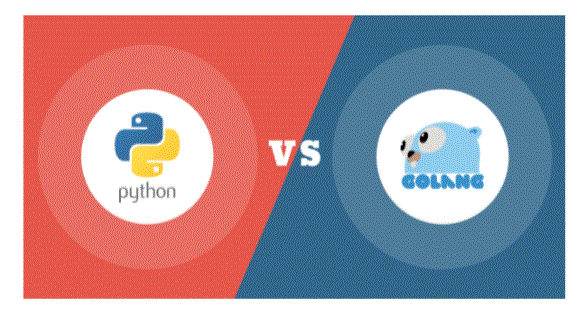
- Short Syntax
- Typing in a static manner
- Built-in garbage collection
- Integrated concurrency model
- Quick Compiling
- Performance Efficiency
- Featured Library
- Mistake Handling
- Cross-Platform Cooperation
- Quick and effective method for writing concurrent code
- Constructed-in Testing Framework
- Readable and Simple Syntax
- Universal and Multipurpose
- Language Interpretation
- Superior Language
- Adaptive Typing
- Significant Standard Library
- enormous ecosystem
- Supports the principles of OOP
- Easily Integrable
- Handling Exceptions
- Prototyping quickly
- Community Assistance
Characteristics of Go vs Python
Go
Here are main characteristics of Go language:
Python:
Here are main characteristics of Python:
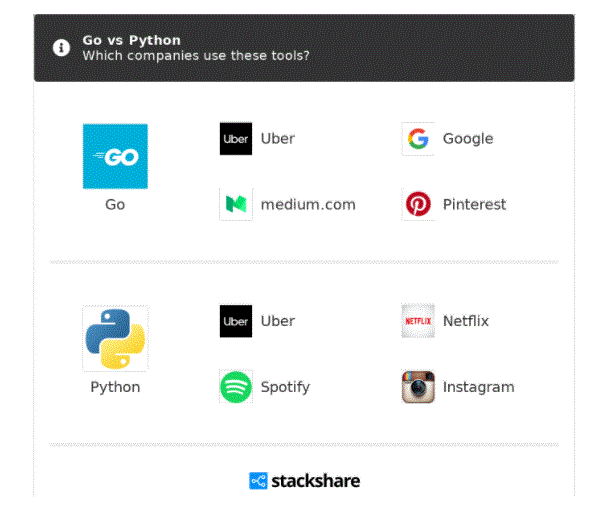
- Go is statically typed, ensuring variable types are known and verified before compilation, reducing runtime mistakes and identifying issues.
- Go’s static typing promotes predictability and safety in code by explicitly declaring variable types, enabling developers to understand data flow and expected types.
- The Go compiler optimizes code through static typing, enabling faster execution and reduced memory usage by recognizing data types beforehand.
- Types are explicitly specified, simplifying refactoring and allowing secure changes to variables or function parameters without detecting discrepancies across the codebase.
- Python’s dynamically typed nature allows for runtime decision-making about variable types, enabling variable changes during program execution./li>
- Dynamic typing offers flexibility, allowing developers to write compact code without explicitly defining types, resulting in faster development and simpler prototyping./li>
- Python’s dynamic typing eliminates explicit type annotations, making code clearer and easier to read, allowing developers to focus on finding solutions instead of managing types./li>
- Dynamic typing can cause runtime errors due to type-related problems, as assigning variables to different types can result in problems that might be challenging to find during development.
Python’s dynamic typing and Go’s static typing impact development process and coding errors
Go’s Static Typing:
Python’s Dynamic Typing:
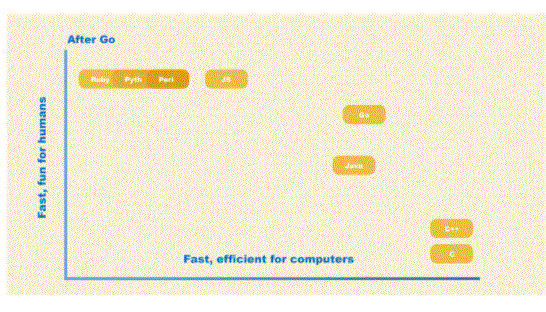
- Predefined commands to make commands understandable by the computer. Is there any difference in the syntax of these programming languages? let’s check. Syntax is one of the aspects that affect readability level. Let’s take a look at how static and dynamic typing can change readability, for better or worse.
- In Python, as a dynamic language, not every function is documented. This sometimes forces you to dig deeper into the implementation, or alas, you have to guess which input parameters are expected. Go, as a statically typed language, hands everything to you regarding the input type. Python syntax is quite dense, but uses a lot of English words. This makes it more understandable and easier. One of the Python principles states: “There must be one obvious way to do this – and preferably only one.” With this mantra in mind, the newly created syntax is probably the easiest and most consistent. Still, you have to keep track – Python syntax changes with each new version of the language.
- One of the strengths of the Go programming language is its minimal syntax – it has remained almost the same without any major changes in recent years. Thanks to this you have a guarantee that applications written in the old Go language version will still work. This means that developers do not have to learn new paradigms or syntax. What’s more, there is only one standard code format.
- Everything above points to the strengths of Go, unless you want to write code that isn’t strictly syntax based. The Go programming language leaves no choice for you – you have to be faithful to gofmt. Python helps you – PEP 8. PEP 8 is a guide full of conventions for enhancing and enriching the standard Python library and is considered a formatting standard for Python projects.
What does syntax look like in python and go?
- Mandelbrot – Python 3: 163.32 sec vs Go: 3.73 sec.
- fannkuch-redux – python 3: 352.29 sec vs go: 8.31 sec.
- K-nucleotide – Python 3: 46.28 sec vs Go: 7.46 sec.
- n-body – python 3: 567.56 sec vs go: 6.38 sec.
- Reverse-complement – Python 3: 7.20 sec vs Go: 1.35 sec.
- binary-tree – python 3: 48.03 sec vs go: 12.23 sec.
- phidgets – python 3: 1.28 sec vs go: 1.00 sec.
- Regex-Dux – Python 3: 1.36 sec vs Go: 3.85 sec.
- As you can see, Python was faster than Go in only one case. What, like in the n-body case, makes Go 89 times faster than Python? This is not an isolated example – in fancuch-redux, Go is about 43 times faster. The main reason the difference is so obvious is that Go is a compiled language as opposed to interpreted Python.
- The Go programming language has another advantage: goroutines. These lightweight threads require less RAM and are managed by the Go runtime. Goroutines use fewer resources than traditional threads (such as in Python). Moreover, multithreading in Python cannot be taken literally – Python programs are single-threaded with the possibility of connecting concurrent routines.
- But speed is not the only important aspect when building an application. Exception handling can be an important factor when choosing the most appropriate programming language for your needs.
Is python faster than Go:
In order to properly compare the speed of these languages, some tasks were chosen to show how fast Go and Python can solve them:
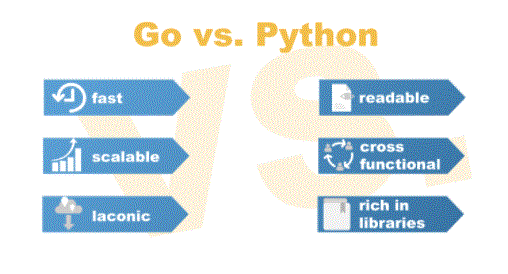
- Exception Handling in Python
- In Python, you can handle exceptions with three statements:
- Try
- Apart from
- Finally
- No exceptions – After executing the try statement, the except statement is passed, and the try statement terminates.
- There is an exception – if the exception matches the one named in the exception statement – this clause is executed, the rest of the try statement is discarded.
- There is an exception, but it does not match the exception mentioned in the exception statement – it is an unhandled exception, and execution has been stopped.
- In either event the last statement is executed. This is just a cursory explanation of how exceptions are handled in Python – on their official site, you can find a more complicated tutorial.
- if name == “” {
- return “”, errors. new(“Name is empty”)
- ,
- return “hello” + name, null
- ,
- func main() {
- var error error
- bridesmaid greeting string
- Greeting, error = Greeting(“”)
- if err != null {
- fmt.Println(err)
- } Otherwise {
- fmt.Println(Greetings)
- ,
- Greeting, err = Greeting(“Jimmy”)
- if err != null {
- fmt.Println(err)
- } Otherwise {
- fmt.Println(Greetings)
- ,
- ,
Error Handling in python and go:
To be specific, we are thinking of exceptions. Exceptions are anything unusual that demands special/separate processing. They are not due to errors in syntax. Handling exceptions guarantees that the program flow is not interrupted when an error occurs.
How do the Python and Go programming languages deal with exceptions?
The statements between the try and all except make up a try clause. There are a few possible scenarios when you execute the try clause:
Digging deeper into this topic, you can also find a raise statement. This statement helps to raise the exception – it’s just being coerced to happen. But you should be aware that you should use this statement only in emergency situations. It is not a solution to control program flow.
In this scenario, we have a function Greeting that takes a name and returns a Greeting. In case of an empty name it fails and gives an error. The result of the first call would print “Name is empty” and the second would print “Hello Jimmy”. This is a simple example, but it shows the main idea of a multi-value return with no errors. With this pattern, any developer using a function is aware of whether the function can generate an error simply by looking at its signature. With panic/recovery mechanisms, anyone wanting to use the function would need to inspect the underlying implementation.
Additionally, any error should be handled only once. This means that any time an error occurs it must either be logged, passed on, stored, or handled in-place. Handling an error in this way simplifies the flow and makes code behaviour more predictable because ultimately the error is handled in one place somewhere deep in the code without any side effects.
One of the most popular complaints about Go (especially from newcomers) is the “if err != nil {…}” pattern. Many say that it clouds the code and makes it difficult to read. However, there are patterns (such as one-line ifs) that can simplify the “if err != nil {…}” waveform.
Does Python or go support concurrency:
Concurrency is the ability to execute multiple processes at the same time. One of the advantages of this approach is the time savings, which is not the case when you’re waiting for one task to complete before the next. Python does not natively support concurrency, but provides some solutions to achieve concurrency, such as:
Threading – A thread is a set of operations that can be executed independently of others.
asyncio – a dedicated library for writing concurrent code with the help of async/await syntax.
Multiprocessing – Python supports multiprocessing by sending tasks to different processors.
The Go programming language is famous for its strong support for the concurrency paradigm. The biggest helpers are goroutines and channels:
Goroutines – A function that is capable of running concurrently with others.
Channels – are connectors between goroutines. They enable communication and synchronisation between them.
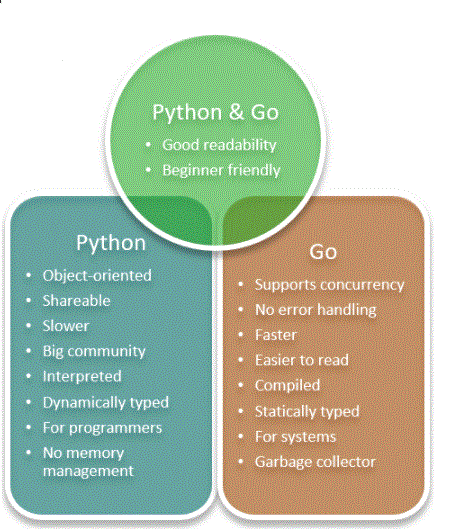
- Go is a very performant language with lots of support for concurrency. It is almost as fast as languages like C++ and Java. Although it takes a bit longer to build things using Go than Python or Ruby, you’ll save a tonne of time optimising the code. We have a small development team at Stream powering feed and chat for over 500 million end users. Go’s combination of a great ecosystem, easy onboarding for new developers, fast performance, solid support for concurrency, and a productive programming environment make it a great choice. Stream still leverages Python for machine learning for our dashboards, sites, and personalised feeds. We won’t be saying goodbye to Python any time soon, but going forward all performance-intensive code will be written in Go.
- In short, both Python and Golang have their own benefits, depending on the programmer’s skill and ability to scale to a real-world requirement. When it comes to syntax both Python and Golang are very clear and clear and reduce the task of the developer to a great extent. Choosing the appropriate language for your coding can point to the difference between an effective program and a program that requires a lot of maintenance. If speed and scalability is your primary objective for developing tools, then Golang is your right choice. Golang is the language that comes close to the speed of C/C++, plus it is very easy to use, and you can even get rid of manual memory management.
- But, if you want to generate scripts and tools that run effectively across teams while promoting readability, Python may be the best option for you. The language reads like regular English and can be well understood even by developers who don’t have experience with Python before. By default, indented blocks make the code neater, and support clean coding. And the various libraries available for free reduce the number of lines used within your code.
Conclusion:

